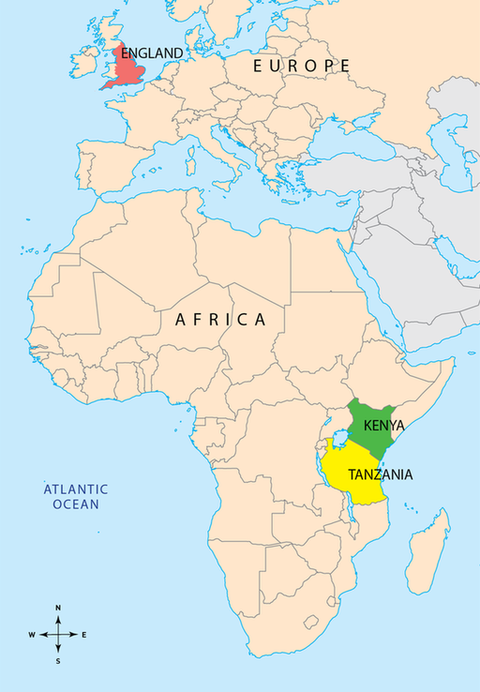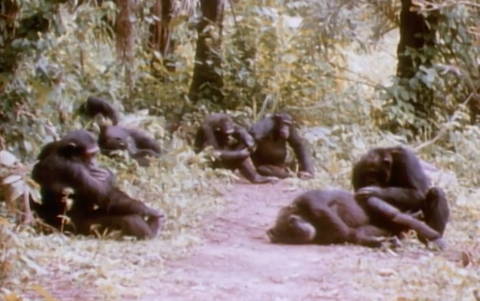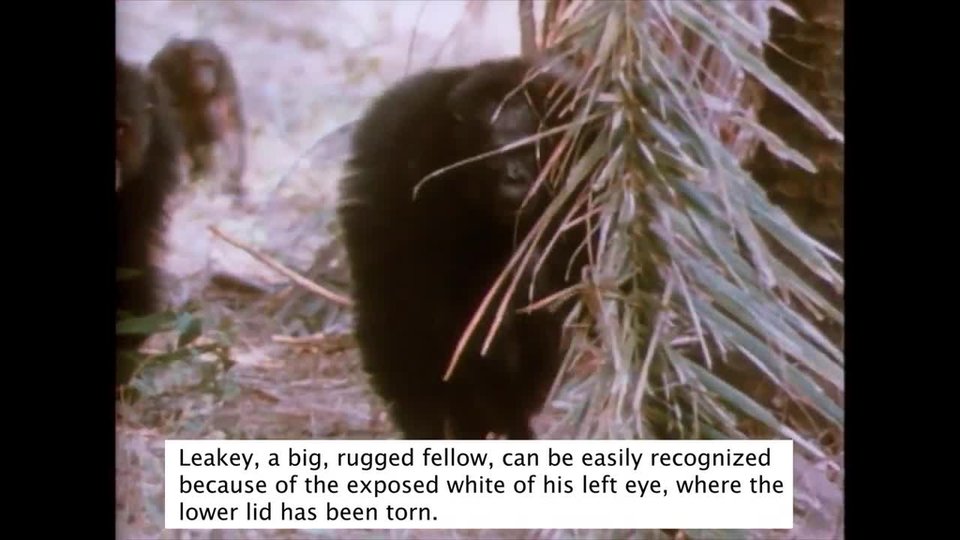ThestoryofJaneGoodallislikeacampfiretale.Itgetsbetterwitheachtelling.Herstoryhasbeentoldmanytimesinmanyways.So,peoplerecognizeitrightaway.In1965,Janewasayoung,untestedscientist.Shewantedtolearnaboutchimpanzees.Shehadnotraininginresearch.Yet,shemanagedtomovethroughthemostlymaleworldsofscienceandmedia,makingdiscoveriesinherfield.Thisisher story.
GrowingUp
ValerieJaneMorris‑GoodallgrewupinEngland.Fromanearlyage,shewasfascinatedbyanimals.ShedreamedoflivinginAfrica.Shecouldnotaffordcollege.So,Goodallwenttoschooltobecomeasecretary.Herfirstjobwasasawaitress.ShesavedhermoneyforanoceanpassagetoKenya,in Africa.
Oncethere,shemet with
paleoanthropologistLouisS. B.Leakey.Hisinterestingreatapesledhimtoresearchtheoriginsofhumans.LeakeyhiredGoodallasasecretary.Later,hearrangedforhertoresearchchimpanzeesinanotherAfricancountrycalled Tanzania.
RoughingIt
Bythesummerof1960,GoodallwassettingupcampintheGombeStreamReserve.Leakeyhadraisedthemoneyforhertocarryoutsixmonthsof fieldwork.
Goodallfollowedherinstinctsforherresearch.Thescientificpracticewastousenumberstoidentifyanimalsbeingstudied.Instead,Goodallrecordedobservationsofthechimpsbynamesshemadeup.TherewasFifi,Flo,Flint,andevenMr. McGregor.
Goodallspentmanyhourslookingforchimpsthroughherbinoculars.Onceshespottedthem,she’dtrytomoveclosersothey’dgetusedtoher.Butwithonemonthleftinherstudy,shehadn’tgottenclose,andthechimpsweren’tusedtoher.Norhadshemadeanyimportant discoveries.
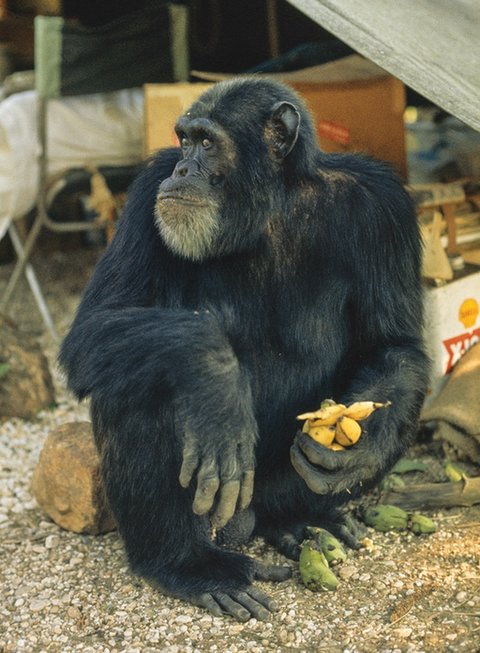
DavidGreybeardvisitsGoodall’s camp.
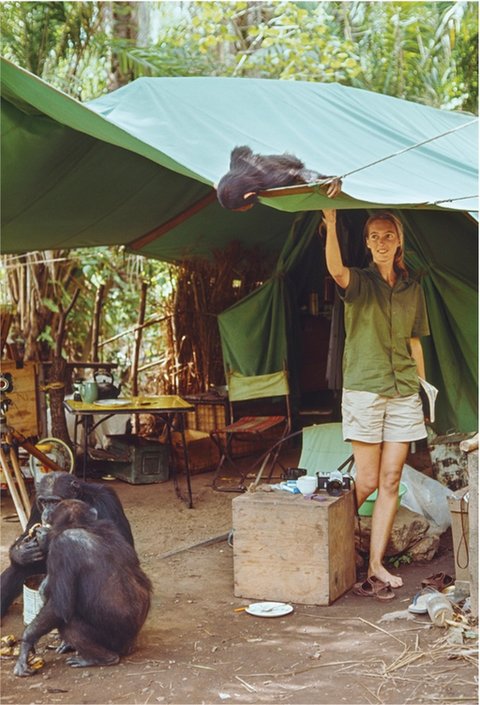
FlinttakesapeekatGoodallfromthetopofher tent.
TurningPoint
Theneverythingchanged.Goodallmadethreediscoveries.ThesewouldnotonlymakeLeakeyproudbutwouldalsoturnscienceonits head.
Inherfirstdiscovery,sheobservedachimpeatingadeadanimal.Untilthen,scientiststhoughtthatapesdidn’teatmeat.ShehadnamedthischimpDavidGreybeard.Twoweekslater,sheobservedthesamechimpagain.Hepokedabladeofgrassintoatermitetunnel.Whenhepulleditout,itwascoveredwithtermites,whichheslurped down.
Inanotherinstance,GoodallsawDavidGreybeardpickatwig.Thenhestrippedit ofitsleavesandusedittofishfortermites.Hehadexhibitedtooluseand toolmaking—twothingsthatonlyhumanswerethoughtcapableof.WhennewsreachedLeakey,he said:
NOWWEMUSTREDEFINETOOLSTOPREDEFINEMANSTOP
OR ACCEPTCHIMPANZEESAS HUMAN
Leakey’s telegram
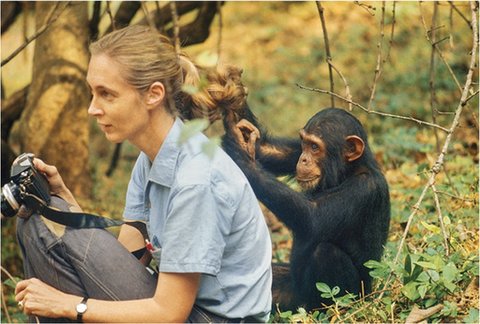
FreudcarefullyinspectsGoodall’s hair.
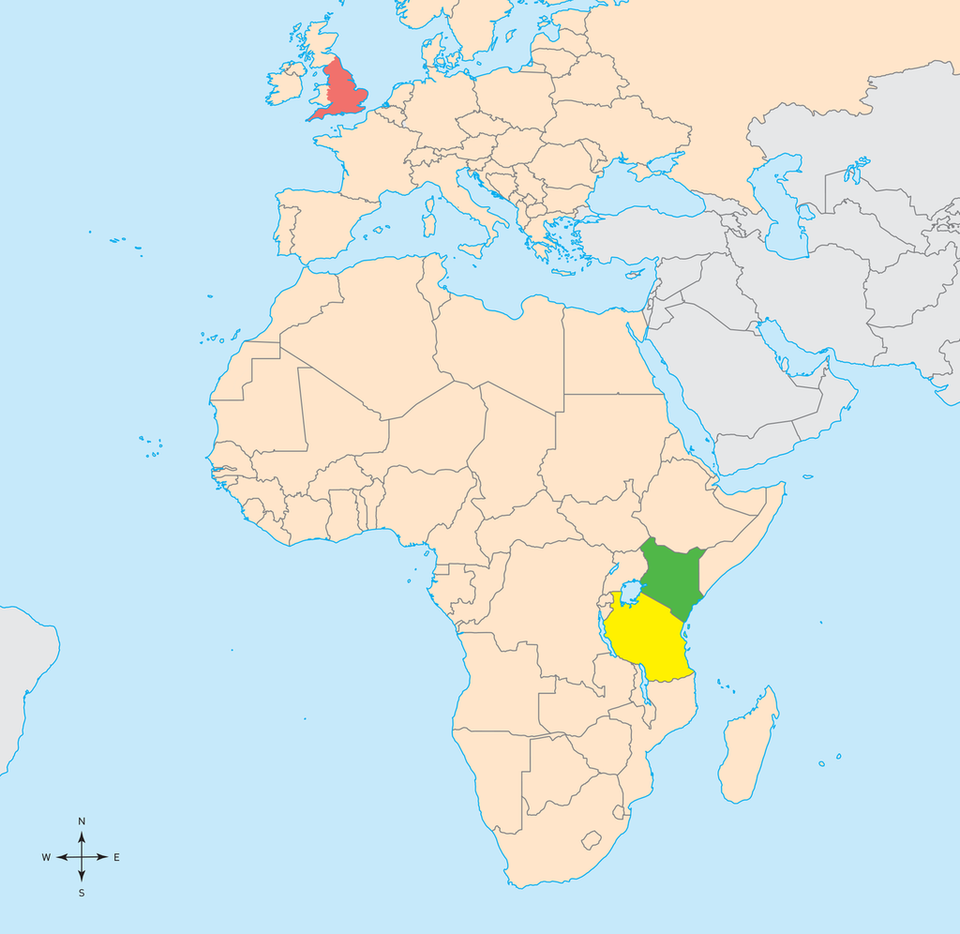
EUROPE
ENGLAND
AFRICA
KENYA
ATLANTIC
OCEAN
TANZANIA
